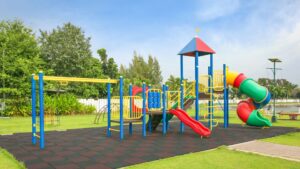Os parques públicos são espaços verdes vitais que servem como pontos de encontro para as comunidades, oferecendo recreação, relaxamento e interação social. Embora existam muitos parques em todo o mundo, nem todos são bem sucedidos. Alguns parques simplesmente não satisfazem as necessidades das suas comunidades. Para conceber e manter um parque que obtenha uma classificação de cinco estrelas ou uma posição elevada no Índice ParkScore, o planeamento urbano e a atenção à experiência do utilizador são essenciais.
Neste artigo, vamos explorar os elementos-chave que contribuem para o sucesso dos parques públicos. Quer se trate de uma colocação bem pensada, de espaços verdes ou de comodidades atractivas, estes componentes garantem que um parque se torna uma parte apreciada da comunidade.

1. A importância da conceção dos parques
A criação de um parque é mais do que um simples trabalho de paisagismo. Trata-se de um processo abrangente que envolve o planeamento, a conceção e a gestão do espaço, de modo a satisfazer as necessidades de todos os visitantes. Um parque bem concebido deve oferecer beleza e funcionalidade, proporcionando um local onde as pessoas possam descontrair, fazer exercício, socializar ou ligar-se à natureza.
Aspectos fundamentais de uma boa conceção de um parque:
- Colaboração: Os parques são concebidos com a ajuda de urbanistas, arquitectos paisagistas e membros da comunidade. O seu feedback garante que os parques são acolhedores e funcionais.
- Contributo da comunidade: Os parques destinam-se a servir as necessidades dos residentes. É crucial compreender as preferências da comunidade para garantir que o parque é relevante e valorizado por ela.
- Inclusão: Garantir a acessibilidade para pessoas de todas as capacidades é um elemento-chave da conceção moderna de parques.
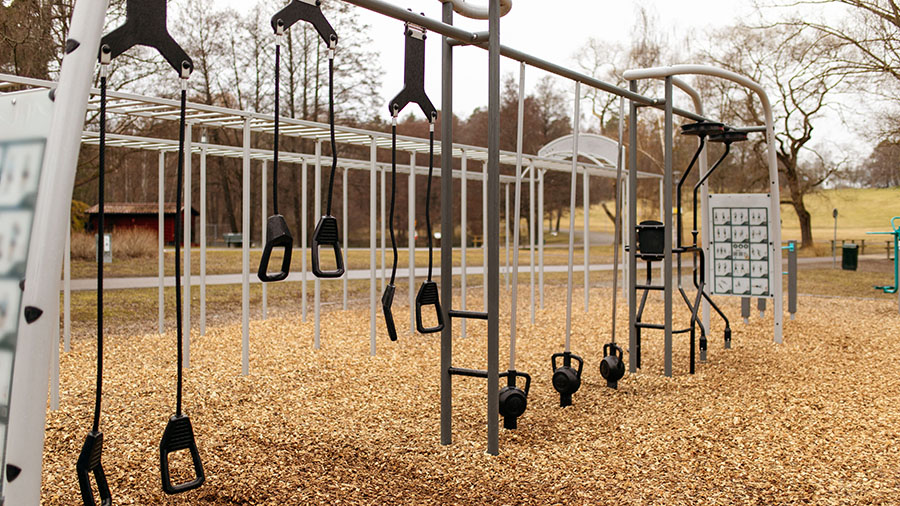
2. O papel da localização
O sucesso de um parque começa pela sua localização. Uma localização central e de fácil acesso garantirá que pessoas de todos os estratos sociais possam visitar o parque. Quanto mais próximo estiver do local onde as pessoas vivem, maior será a probabilidade de o visitarem frequentemente.
Critérios de localização ideal do parque:
- Acessibilidade: O parque deve estar localizado a uma distância de 10-30 minutos a pé para a maioria da comunidade. Quanto mais fácil for o acesso, mais visitantes atrairá.
- Necessidades da comunidade: A localização deve também refletir as necessidades específicas da zona envolvente. Por exemplo, um parque urbano pode necessitar de mais caraterísticas recreativas, enquanto os parques em zonas residenciais podem centrar-se mais em espaços tranquilos e na natureza.

3. Incorporar a natureza na conceção do parque
A natureza é um componente crucial de qualquer parque bem sucedido. Os espaços verdes proporcionam o tão necessário alívio da selva de betão da vida citadina. Um parque deve ser concebido para ligar as pessoas à natureza, seja através de uma vegetação luxuriante, de elementos aquáticos ou da vida selvagem.
Elementos essenciais da natureza para parques de sucesso:
- Variedade de espécies vegetais: A integração de uma grande variedade de plantas contribui para a biodiversidade do parque e torna-o mais apelativo.
- Caraterísticas da água: Lagos, riachos ou fontes podem criar espaços tranquilos e ajudar a atrair a vida selvagem.
- Manutenção: O cuidado regular das plantas e dos espaços verdes garante que o parque se mantenha visualmente atrativo e agradável para os visitantes.
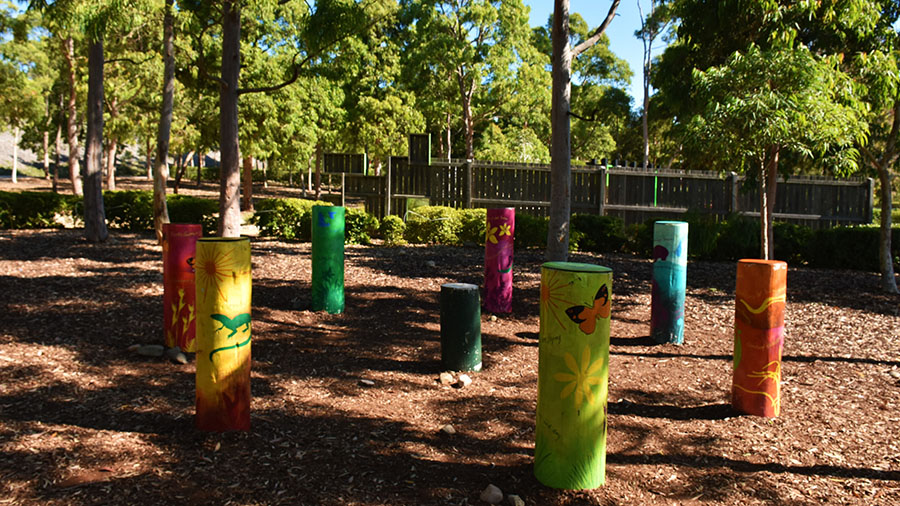
4. Áreas de estar e de reunião
Por mais bonito que seja o parque, as pessoas não ficarão muito tempo se não houver lugares para se sentarem e relaxarem. Oferecer amplas opções de lugares sentados é essencial para tornar o parque convidativo e confortável para as pessoas se reunirem, lerem, conversarem ou simplesmente descansarem.
Tipos de assentos a incluir:
- Bancos de jardim: Ideal para quem prefere sentar-se e apreciar a vista.
- Mesas de piquenique: São óptimos para reuniões familiares ou actividades de grupo.
- Zonas de sombra: Certifique-se de que existem opções de lugares à sombra, especialmente em climas soalheiros.
5. Equipamento lúdico para todas as idades
Um parque público de sucesso é aquele que oferece oportunidades recreativas para todos os grupos etários. Isto inclui tudo, desde parques infantis para crianças a instalações desportivas para adolescentes e adultos.
Equipamento e caraterísticas de jogos populares:
- Parques infantis: Os escorregas, baloiços e estruturas de escalada são caraterísticas clássicas dos parques destinados às crianças.
- Instalações desportivas: Os campos de basquetebol, os campos de futebol e os campos de ténis agradam a miúdos e graúdos mais velhos.
- Jogo inclusivo: Os parques infantis sensoriais e o equipamento de adaptação destinam-se a crianças com deficiência, garantindo que todas as famílias possam desfrutar do parque.
- Parques para cães: Estas áreas são essenciais para os donos de animais de estimação, proporcionando espaço para os cães se exercitarem e socializarem.
6. Garantir a segurança do parque
Um parque deve ser um espaço seguro para todos. A segurança é um fator crítico que afecta a forma como as pessoas se sentem confortáveis no parque. Embora a segurança visível seja importante, nunca deve parecer intrusiva ou esmagadora.
Elementos-chave de segurança para parques:
- Patrulhas de segurança: A segurança pode ser garantida através de patrulhas regulares efectuadas pelo pessoal ou pelas autoridades locais.
- Serviços de emergência: Uma sinalização clara dos serviços de emergência ou mesmo dos postos de segurança no local pode tranquilizar os visitantes.
- Iluminação: Uma iluminação adequada pode ajudar a reduzir a criminalidade e tornar os parques mais convidativos depois de escurecer.
7. Percursos pedestres e trilhos
Os passadiços e os trilhos melhoram a experiência do parque, permitindo aos visitantes explorar a beleza natural da área. Quer se trate de um simples caminho perimetral ou de sistemas de trilhos mais extensos, estes caminhos ajudam a orientar o tráfego pedestre e proporcionam oportunidades de exercício.
Tipos de percursos:
- Trilhos de perímetro: Para caminhadas ou corridas casuais, estes caminhos podem ser facilmente mantidos e proporcionam um percurso rápido pelo parque.
- Trilhos naturais: Os trilhos que serpenteiam por zonas arborizadas, perto de lagoas ou ao longo de rios podem melhorar a experiência natural do parque.
- Acessibilidade: Assegurar que os caminhos são largos, suaves e acessíveis a todos, incluindo os que utilizam cadeiras de rodas ou carrinhos de bebé.
8. Limpeza e manutenção
Um parque limpo é essencial para atrair visitantes. Ninguém quer passar tempo num parque cheio de lixo, graffiti ou instalações negligenciadas. A manutenção regular é fundamental para preservar o aspeto do parque e torná-lo um local agradável para visitar.
Conselhos de manutenção para parques:
- Limpeza das casas de banho: Manter as casas de banho do parque bem abastecidas e higiénicas é um dos aspectos mais críticos da manutenção do parque.
- Recolha de lixo: A recolha frequente de lixo e a disponibilização de caixotes de lixo em grande quantidade no parque ajudam a manter a área arrumada.
- Paisagismo: O corte regular da relva, a poda e o cuidado das plantas são vitais para manter a estética do parque.
9. Promover a acessibilidade e a inclusão
Um parque bem sucedido é aquele que acolhe todos os membros da comunidade, independentemente da idade, capacidade ou antecedentes. Criar espaços inclusivos significa conceber áreas que todos possam desfrutar e sentir-se confortáveis a utilizar.
Caraterísticas inclusivas a incorporar:
- Acesso para cadeiras de rodas: Assegurar que os caminhos, os parques infantis e as instalações sejam acessíveis às pessoas com deficiência.
- Equipamento de adaptação: Considere a possibilidade de oferecer equipamento especializado para parques infantis ou áreas de recreio destinadas a crianças com deficiência.
- Representação cultural: A arte, os eventos e a sinalização devem refletir a diversidade da comunidade.
10. Práticas sustentáveis para a gestão ambiental
A sustentabilidade é crucial na conceção e gestão dos parques. As práticas sustentáveis reduzem a pegada ambiental do parque e garantem que este continua a ser um espaço saudável e vibrante para as gerações futuras.
Práticas sustentáveis a implementar:
- Recolha de água da chuva: A recolha de água da chuva para irrigação reduz o consumo de água.
- Iluminação energeticamente eficiente: A utilização de luzes alimentadas por energia solar ou de luzes LED pode minimizar o consumo de energia.
- Plantas nativas: A plantação de espécies nativas apoia a vida selvagem local e reduz a necessidade de fertilizantes químicos e pesticidas.

11. Incorporar a tecnologia e a inovação
Com o aumento da tecnologia, os parques podem beneficiar de ferramentas digitais que melhoram o envolvimento dos visitantes e a gestão global. Desde aplicações móveis a actualizações em tempo real sobre as instalações do parque, a tecnologia melhora a experiência do parque.
Caraterísticas técnicas a considerar:
- Aplicações móveis: Oferecer aplicações que forneçam actualizações em tempo real sobre eventos, instalações e comodidades do parque.
- Mapas interactivos: Os mapas e guias digitais ajudam os visitantes a navegar no parque e a descobrir novas áreas.
- Bancos inteligentes: Alguns parques incluem atualmente estações de carregamento e Wi-Fi nos bancos para melhorar a experiência.

12. Orçamento e gestão financeira
Uma gestão orçamental eficaz garante que o parque se mantém bem conservado e capaz de oferecer uma variedade de programas e serviços. Isto inclui avaliações regulares do financiamento e da afetação de recursos para garantir que o parque é financeiramente sustentável.
Principais considerações orçamentais:
- Subsídios e patrocínios: Candidatar-se a subsídios e patrocínios para financiar projectos de parques.
- Transparência: Facultar à comunidade o acesso aos relatórios orçamentais e financeiros para promover a confiança.
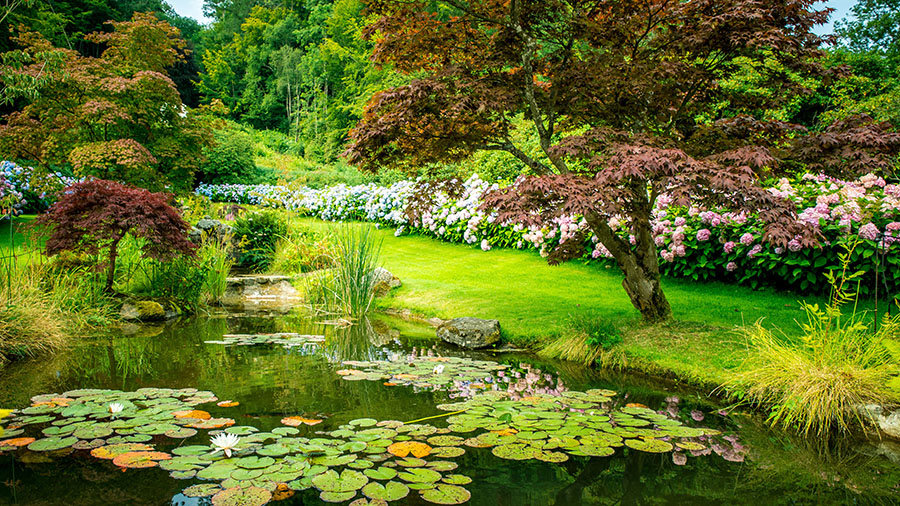
13. Acolher eventos culturais e de entretenimento
Por último, a organização de eventos culturais e de entretenimento pode ajudar a criar uma atmosfera vibrante no parque. Eventos como música ao vivo, festivais ou exposições de arte podem atrair um vasto leque de visitantes e promover um sentido de comunidade.
Eventos culturais a considerar:
- Concertos ao ar livre: Acolher músicos e artistas locais.
- Festivais comunitários: Organizar eventos sazonais para celebrar as tradições e culturas locais.
- Arte pública: Exibir arte pública que reflicta a diversidade da comunidade local.
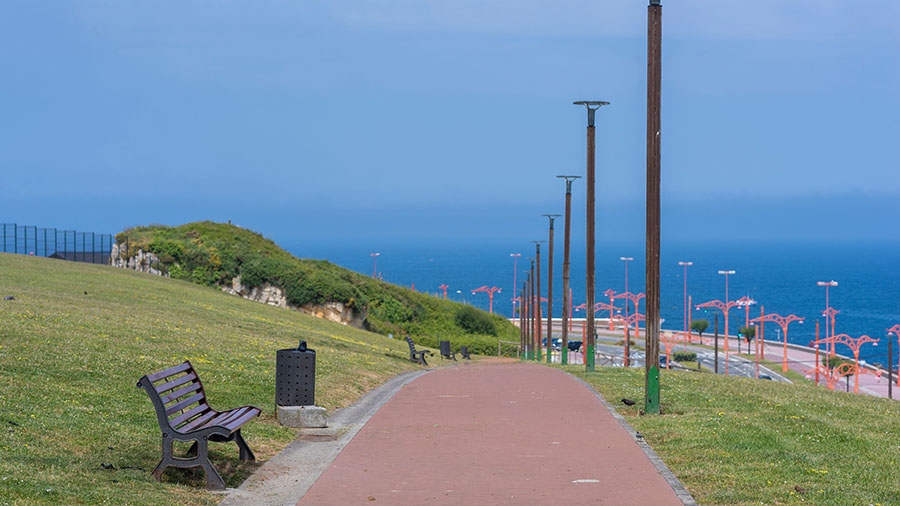
Criar parques que as pessoas adoram
Ao incorporar estes elementos essenciais na conceção do parque, os projectistas podem criar parques públicos que não são apenas funcionais, mas também amados pela comunidade. Quer esteja a conceber um novo parque ou a melhorar um já existente, concentrar-se na acessibilidade, natureza, recreio, segurança e sustentabilidade garantirá que o seu parque se torne um espaço que as pessoas apreciarão durante anos.


